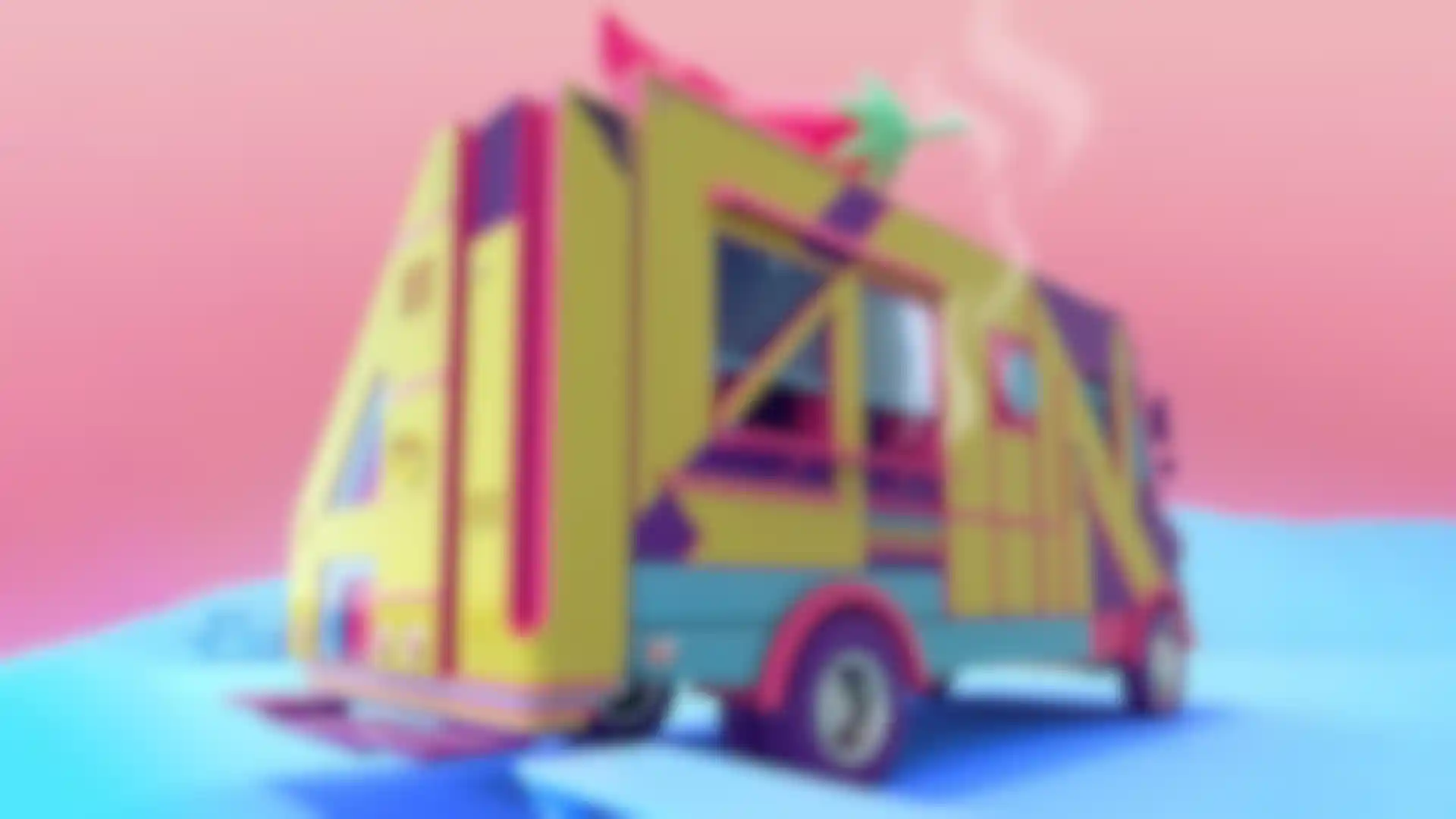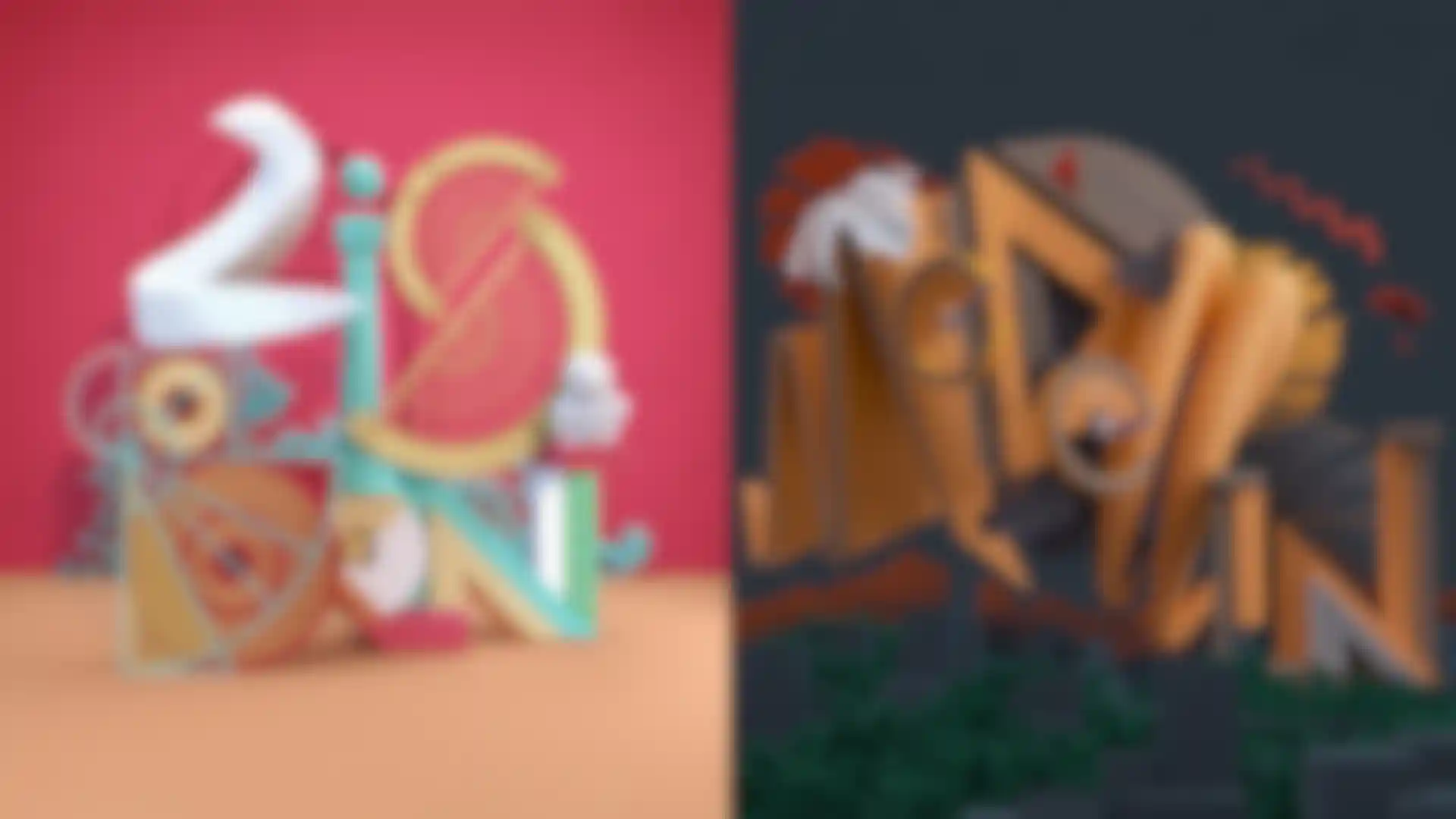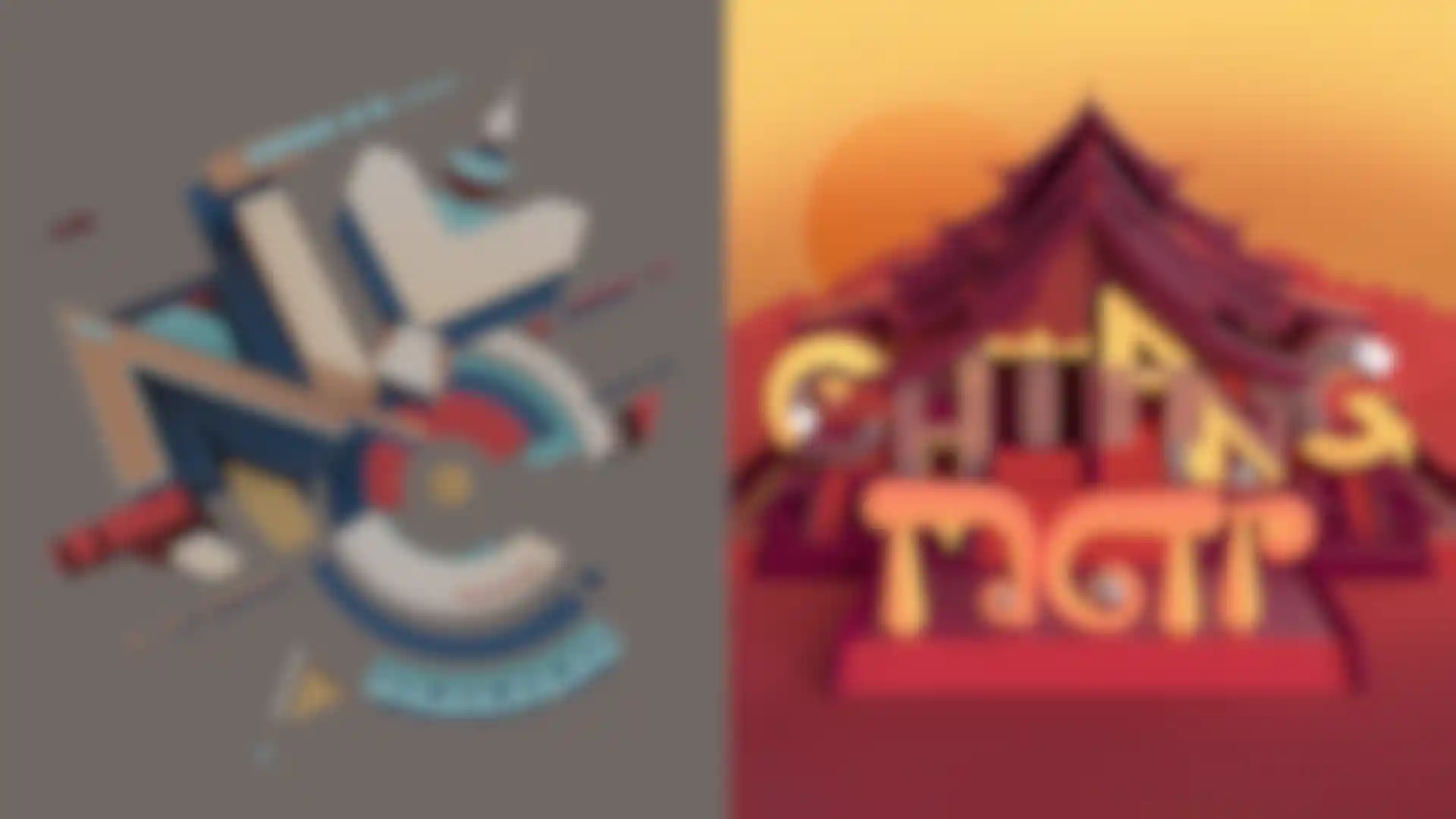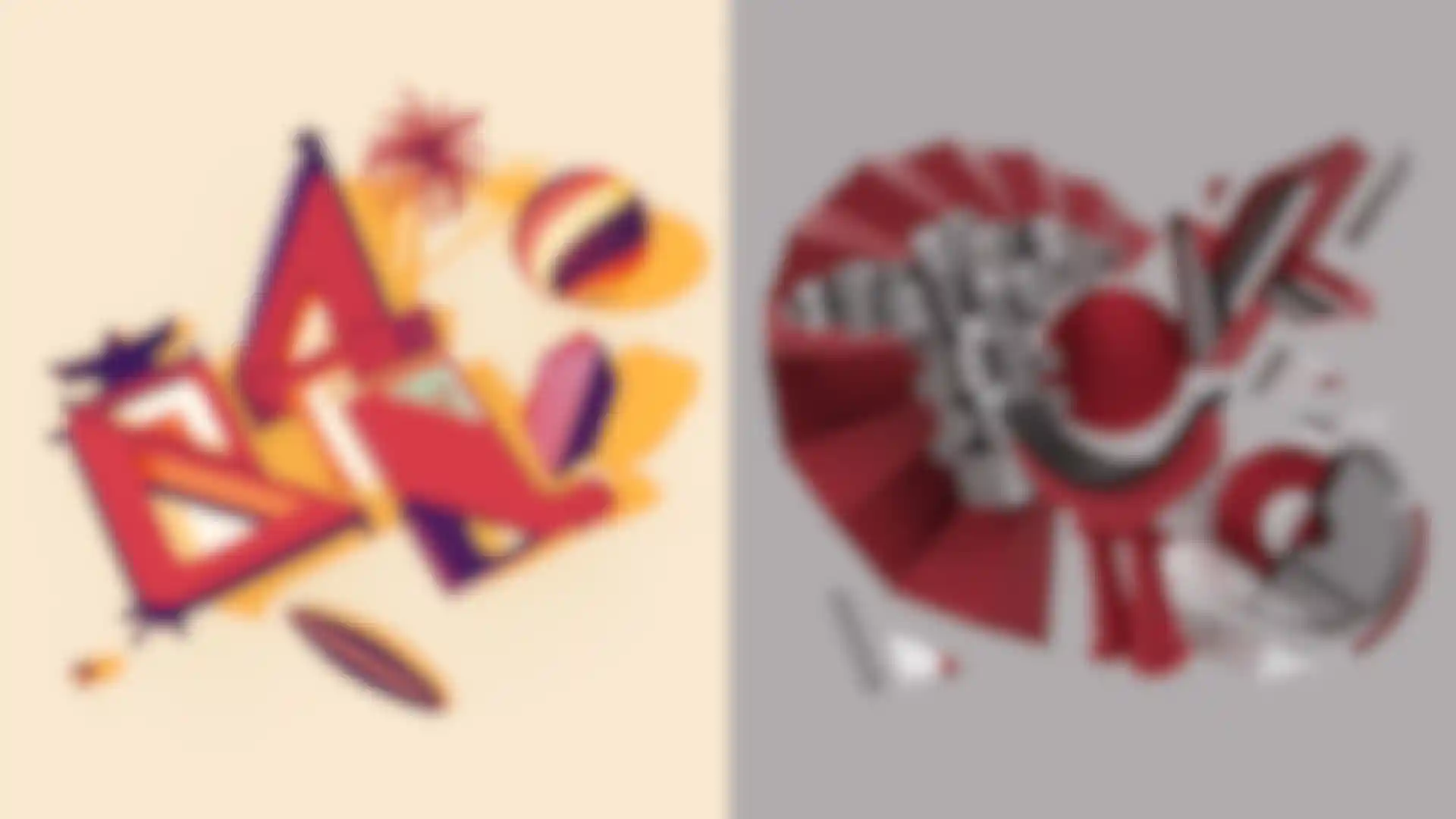
Reverting to Type How Dazzle Ship's Creative Director recharged the creative batteries with a fun personal project.
Dazzle Ship, named after the unusually camouflaged ships of WWI, is a design and motion graphics studio run by Creative Director Alex Donne-Johnson. Although nominally based in London, the studio has increasingly found itself working remotely with artists and customers located all around the world. So in 2017, Alex decided to pack his bags, his copy of Cinema 4D, and take a year-long trip, to both meet distant team members and work more closely with his international clients.
"Part of the decision was based around wanting to be more physical with these people," he explains. "Virtual relationships had already developed over years of working together, so being based purely from a London studio started to feel restrictive."
Alex set off in August, travelling to Lisbon, Bali, Chiang Mai, New York, Austin and Medellín in Colombia. After a brief holiday in Peru, he returned to London in August, 2018.
Alex originally learned a number of 3D packages but now uses Cinema 4D exclusively. "It's just so easy, stable and intuitive," he says. "There's also a great community around it, meaning that it's easy to find support and collaborations." As usual, Cinema 4D accompanied him on his travels, acting as the main tool for working with clients and also in the creation of his pet project, entitled 'Typographic Travels'.
Remote working is increasingly common, he comments, so it's easy to turn up somewhere, join a co-working space with a decent Internet connection and start work. "It's pretty much like a normal work/life routine, just in a different location. It also really allows you to maximize your downtime, which I think is important for staying energized and creative."
The majority of Alex's time away was spent doing client work, made easier by a direct connection to Dazzle Ship's GPU rigs back in the UK, running OTOY's Octane Render. "We fully moved over to Octane in 2015" he says. "I can't remember the last time I did a CPU render!"
The experience of remote working proved beneficial on numerous levels: As well as enabling him to liaise directly with artists and clients, he also met and learned from people from a variety of different professions and backgrounds. It also had a positive impact on his working practices.

"It taught me to be a better producer/director," states Alex. "It was a great exercise in avoiding micro-management and being able to take advantage of a global workflow. If you're clever you can use time zones to your advantage. For instance, during my time in South America we were working on a TVC project with our client, the Drone Racing League. Florian Baumann, our Cinema 4D animator based in Switzerland, could work a full day and get visualizations ready for the a.m. for me to touch up and hand over to the client who was based in NYC. We could then tackle the feedback and Ezequiel Grand (based in Argentina) would run revised Houdini simulations that were ready for the a.m. in Switzerland. Meaning that those revisions were with me the following morning and ready to send back to the client the same day! One of our producers, Rosie Haine, was still in the UK and would monitor work in that time zone and I'd handle anything in the US. It worked very well!"
However, while on his travels, Alex began roughing ideas for a typography project based on the work he'd done previously for 36 Days of Type - a yearly challenge that encourages artists to experiment and create new letter forms. "Having gone through this process for three years now, I started to see the development of a bespoke style that could be adapted for larger typographic pieces. So, from the letters came full words, and as I had been visiting different travel destinations, I thought it would be good to try and express elements of these via typographic art forms. I started roughing ideas for the typography project but never had time to realize it. It wasn't until I'd been back in the UK for four months that I sat down to work on it over the Christmas period, mostly to reminisce!"
The project features six animations created in Cinema 4D representing the locations at which Alex had stayed - plus Tokyo, which he'd visited in 2013 and loved. "The workflow involved bringing together different letter forms and finding a way for them to fit with each other so they looked comfortable. From here, each one needed to introduce elements that encompassed the theme of the location. For instance, food trucks are big in Austin, Texas, so that had to be a key theme, and the colors for that were picked directly from a rainbow house I'd photographed in East Austin. Some were a real challenge and took a lot of back-and-forth, and others just finished themselves easily! "

Originally, the images were just meant to be stills but Alex felt it would be a disservice to the process not to finish them off. He admits that adding animation in Cinema 4D was the easy part, as there were so many elements to play with. He used a lot of Boolean reveals and spline paths, and in the New York City scene, random effectors were used to add movement as the train passes. "The idea was to keep it simple and playful," adds Alex, "so that the type was still mostly on screen. The animation was only to add a bit of subtle intrigue and draw the attention to all of the themes within each image."
Of the segments he had created, Alex struggled the most with Medellín, based on Colombia's second-largest city. "I really felt like it was the hardest to communicate visually as there are so many beautiful things about that place: the breathtaking views and being constantly surrounded by nature. On top of this there was a rich sense of self-expression through [the locals'] creativity, and I was there during the World Cup, so I experienced their passion for football. It was hard to include all of these themes, but I tried my best!"
Despite being busy with customers, Alex feels it's important to have personal projects since commercial jobs can be creatively draining. "Personal work helps to replenish this depleted energy," he says, "by challenging yourself and working without a definite goal in mind. With personal work you can test yourself more, you can attempt different workflows, styles, software, etc. - things that might not work out and would be a disaster on a client project. But this process of experimentation teaches you new things, either by failing or by bringing something new to life via the experimentation process."

"I've found a new route that I'd like to explore more from an art direction perspective. I've learned that the more you push yourself to experiment, the more you can start to develop new styles; the creativity really multiplies and helps spawn new ideas the more you immerse yourself in the process. I think exploring typographic forms can also translate to clients' communications as well to create more engaging communications and campaigns."
Typographic Travel, released under the Dazzle Ship banner, has had a great reception, including an invitation to show the pieces at an art exhibition. "My focus for this year is to try and find more downtime to explore non-commissioned ideas and see where it leads!" says Alex. "The ultimate goal being that we can develop a more original house style and be able to offer a better quality of output for our clients."
All images courtesy of Dazzle Ship.
Dazzle Ship Website:
dazzleship.com